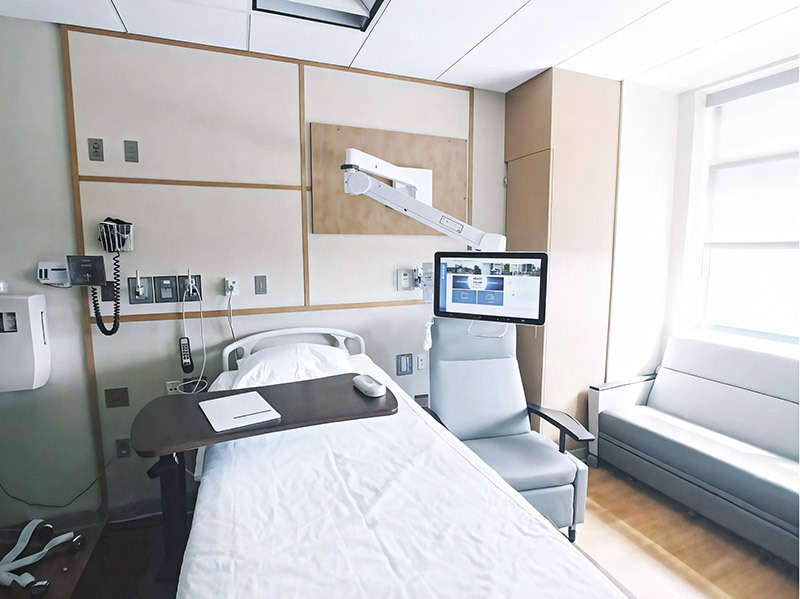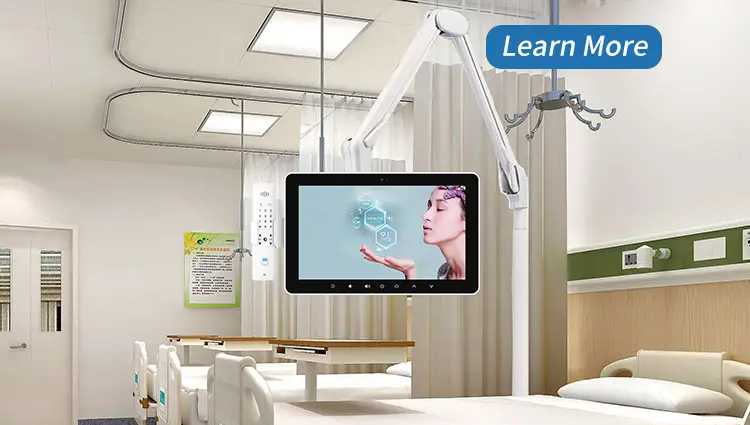In contemporary medical and health services, medical bedside terminal equipment has become a key tool to improve hospital service efficiency and optimize patient experience. These devices can not only monitor patients’ health status in real time, but also provide multimedia entertainment, remote consultation and other functions, greatly improving the quality and efficiency of medical services. However, there are many brands and models of medical bedside terminal equipment on the market, and it is quite challenging for medical institutions to choose suitable products and manufacturers. The following are several key factors to consider when selecting medical bedside terminal equipment and manufacturers:
- Device functions and compatibility
- Equipment quality and safety
- User experience
- Service and Support
- Cost-benefit analysis
- What are the common faults of medical bedside terminal equipment?
- How to evaluate the cost performance of equipment?
- How often should equipment be updated?
- In addition to price and quality, what other factors should be considered when choosing a supplier?
Device functions and compatibility
First, the purpose and required functions of the device need to be clarified, including patient monitoring, medical consultation, entertainment services, etc. At the same time, consider the compatibility of the equipment to ensure that it can seamlessly connect with the hospital’s existing medical systems and software.
Equipment quality and safety
The quality and safety of medical equipment are the primary considerations when selecting. High-quality equipment can not only provide accurate and reliable data and services, but also reduce equipment failure rates and ensure the continuity of medical services. At the same time, the equipment should comply with national and international safety standards and pass corresponding quality certifications.
User experience
The ease of use and interactivity of the device directly affect the experience of patients and medical staff. When choosing, you should consider whether the device’s operating interface is friendly and whether its functions are easy to understand and operate. In addition, the design, size, weight, etc. of the device will also affect the overall user experience.
Service and Support
Excellent after-sales service is one of the important criteria for choosing a manufacturer. Find out whether the manufacturer provides quick response technical support, equipment maintenance and software upgrade services. In addition, learn about the manufacturer’s training services to ensure that medical staff can make full use of the equipment’s functions.
Cost-benefit analysis
On the premise of meeting medical needs, cost-effectiveness is a factor that medical institutions must consider. Conduct a comprehensive cost-benefit analysis, including not only the initial purchase cost of the equipment, but also long-term costs such as operation, maintenance, and upgrades.

What are the common faults of medical bedside terminal equipment?
A1: Common faults of medical bedside terminal equipment include system freezes, inaccurate monitoring data, failure to start normally, etc. These problems are usually related to software and hardware failures or incompatibilities.
How to evaluate the cost performance of equipment?
A2: When evaluating the cost-effectiveness of equipment, the performance, functions, service support and price of the equipment should be comprehensively considered. Compare products and services from different manufacturers and choose equipment that fits your budget and best meets your medical needs.
How often should equipment be updated?
A3: The frequency of equipment replacement depends on the speed of technological development, frequency of use and equipment durability. It is generally recommended to decide whether to upgrade based on the matching of equipment performance with the development of the latest medical technology.
In addition to price and quality, what other factors should be considered when choosing a supplier?
A4: In addition to price and quality, factors such as the supplier’s market reputation, technology research and development capabilities, customer service attitude, delivery capabilities and after-sales service should also be considered.
By comprehensively considering the above factors, medical institutions can more specifically select appropriate medical bedside terminal equipment and manufacturers to improve medical quality and service efficiency. During the selection process, paying attention to the functionality and safety of the product, considering user experience and cost-effectiveness, and choosing a manufacturer that can provide high-quality service support are the keys to ensuring that the equipment can truly meet medical needs and improve the level of medical services.

